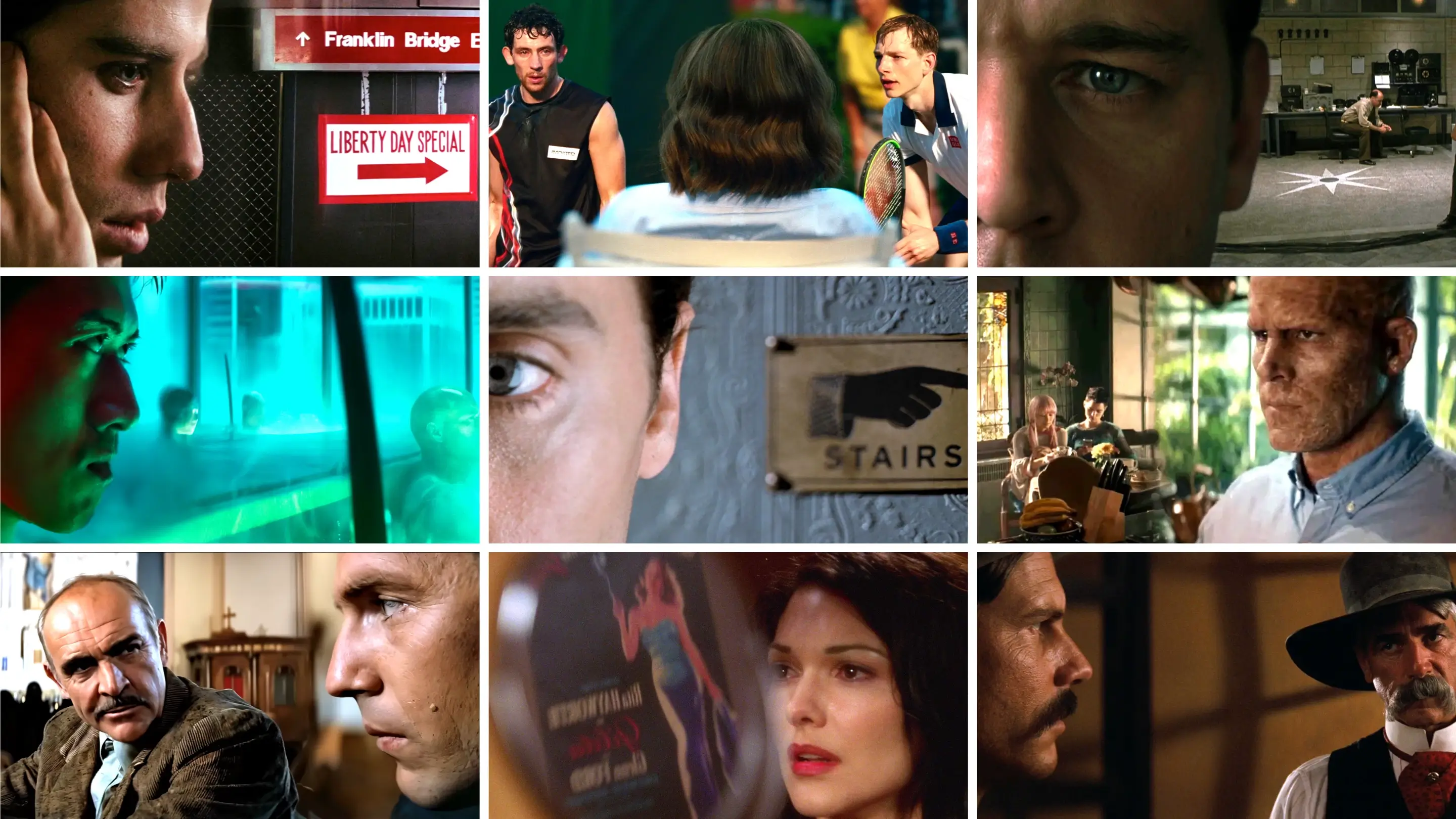Filmmakers have a wide variety of camera techniques to implement to adequately tell a story. One of the most powerful tools directors have at their disposal is the split diopter lens, which is capable of having two subjects at different distances in frame simultaneously.
In this blog, we’ll go over what exactly a split diopter shot is. We’ll also include plenty of examples, so you can see it first-hand. Used properly, you can use a split focus diopter to convey a certain mood and direct your audience to exactly what they need to pay attention to.
What Is a Diopter Lens?
Split diopter definition
In most movies, there are two ways to approach focusing a frame. You can use deep depth of field, where everything in frame is in focus. Or you can use shallow depth of field where only the foreground, middle ground, or background is in focus (while everything else is not).
That was until the split diopter lens came along by "splitting" the difference. We're going to look at how this single element can transform shots into something eye-popping. Let's get started with a thorough definition of a split diopter lens.
SPLIT DIOPTER DEFINITION
What is a split diopter lens?
A split diopter lens is a piece of half convex glass that affixes to the main lens of the camera. This makes half the lens nearsighted while the other half remains farsighted. This creates the illusion of a deep focus.
The item that separates this shot from a traditional deep focus is that there is no continuous depth of field. The audience can still see the space between the two objects is out of focus.
Benefits of using a split field diopter effect:
- Provide more information in a single shot
- Highlight the relationship between two subjects
- Create a sense of uneasiness in the viewer
Use of the split focus lens has declined in recent years. The issue many filmmakers face with such a lens is that it requires a commitment to a particular vision, which can get in the way when so many directors want coverage consisting of as many angles and shots as possible.
However, the split focus diopter shot still has a lot of potential in modern cinema. For the next sections, we’ll go over how you can properly implement a split diopter shot into your film. If a moment of inspiration strikes, then make sure to state your intention to use a split diopter shot within your shot list.Ways to Use a Split Diopter
Split diopter shots for information
One great attribute of the split field diopter effect is that it allows the filmmaker to convey multiple pieces of information in a single shot. In lieu of cutting back and forth between different subjects, the split diopter lens has multiple pieces of information right there in front of you, which makes for more economic storytelling. As our first example, let’s look at this shot from Mission: Impossible.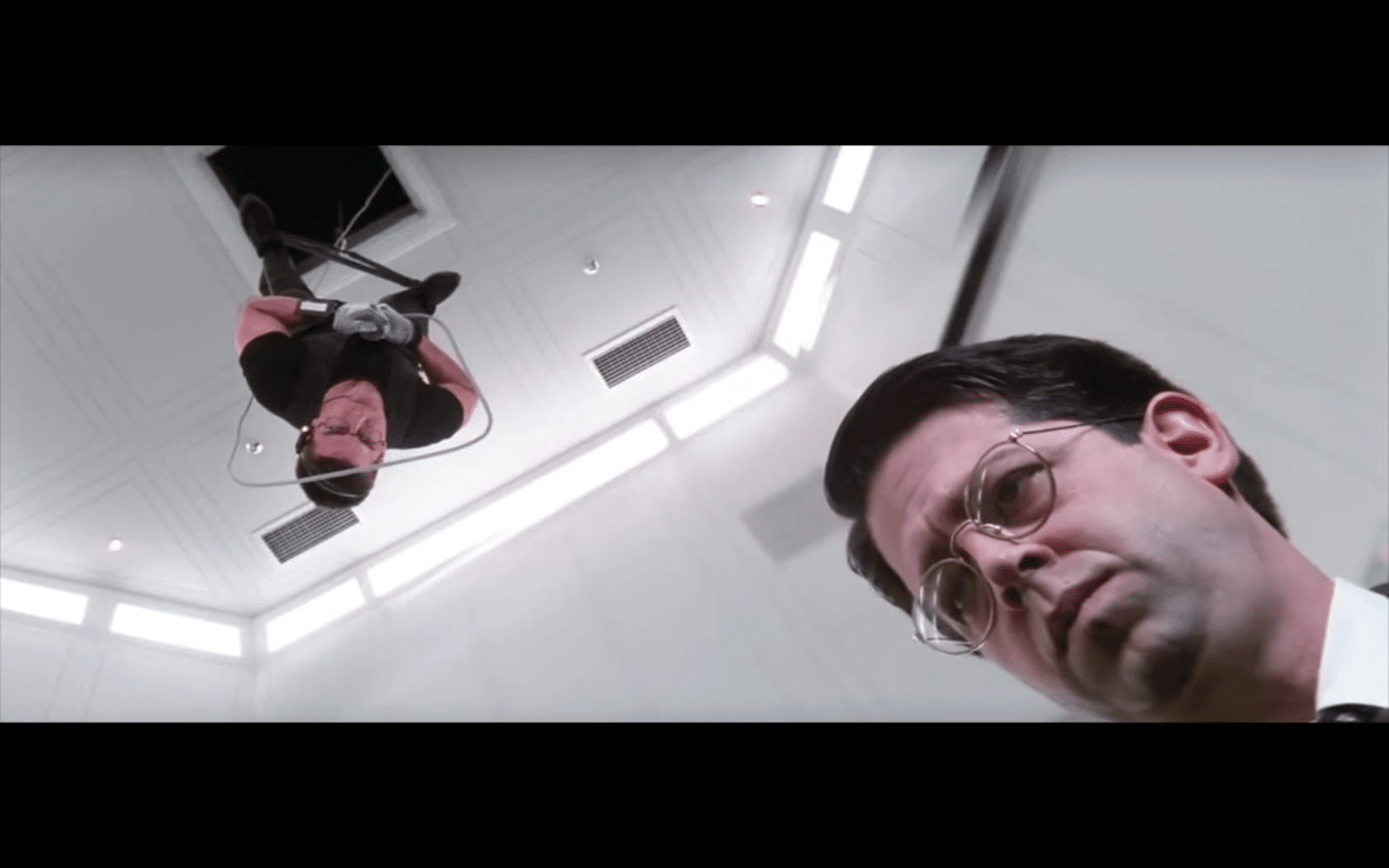
Split Diopter Lens in Mission: Impossible
The shot is effective in that it shows just how close Ethan Hunt is to getting caught. He’s literally a few feet away from danger, and the split diopter lens emphasizes this fact. It gives us all the information we need to be in Ethan’s shoes, so the tension is heightened.
Or what about this scene from Jaws?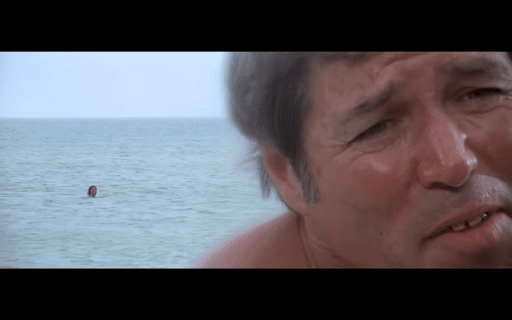
Split Diopter Lens in Jaws
In this instance of the split diopter shot, we see precisely what Martin Brody is focusing on. On one side, there’s a man from town talking about some cats, and on the other side is a girl swimming in the water.
Martin’s attention is divided. It doesn’t matter what the man is talking about because Martin’s primary focus is on the girl. She starts screaming, and although it’s a false alarm this time, we’re put inside Martin’s mind. There’s danger out in those waters, and he can’t pay attention to everything all at once.
Related Posts
How To Use A Split Diopter
Split diopter shots for characters
A split focus diopter shot is also incredibly effective for revealing insight into characters. More specifically, it can be used to juxtapose two radically different characters. One of the best examples of this can be found in the original Carrie.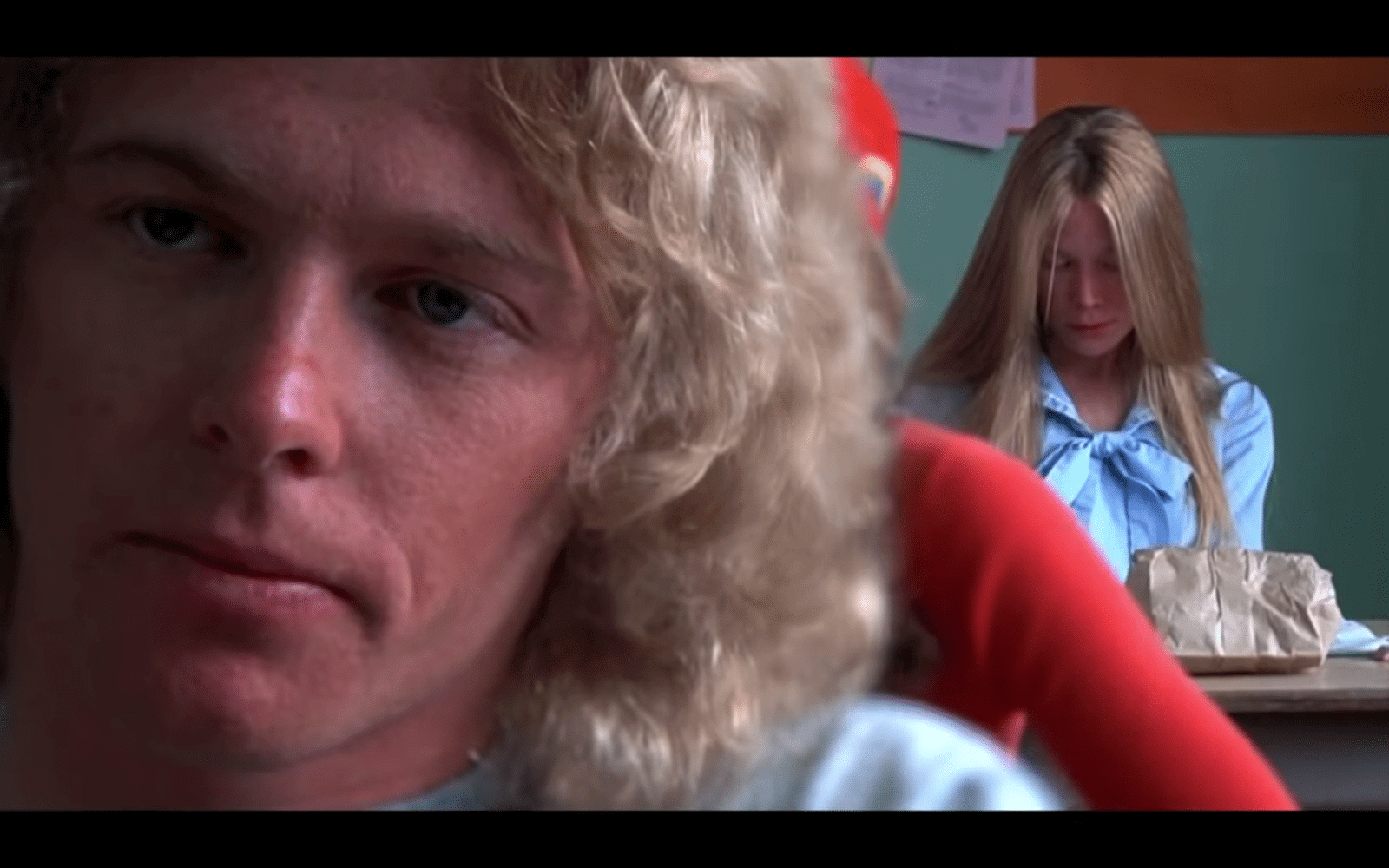
Split Diopter Lens in Carrie
This shot juxtaposes the all-American jock, Tommy, with the social outcast, Carrie. They come from different worlds, and yet, they can both relate to the same poem. The two become connected, which foreshadows Tommy’s eventual prom invitation to Carrie.
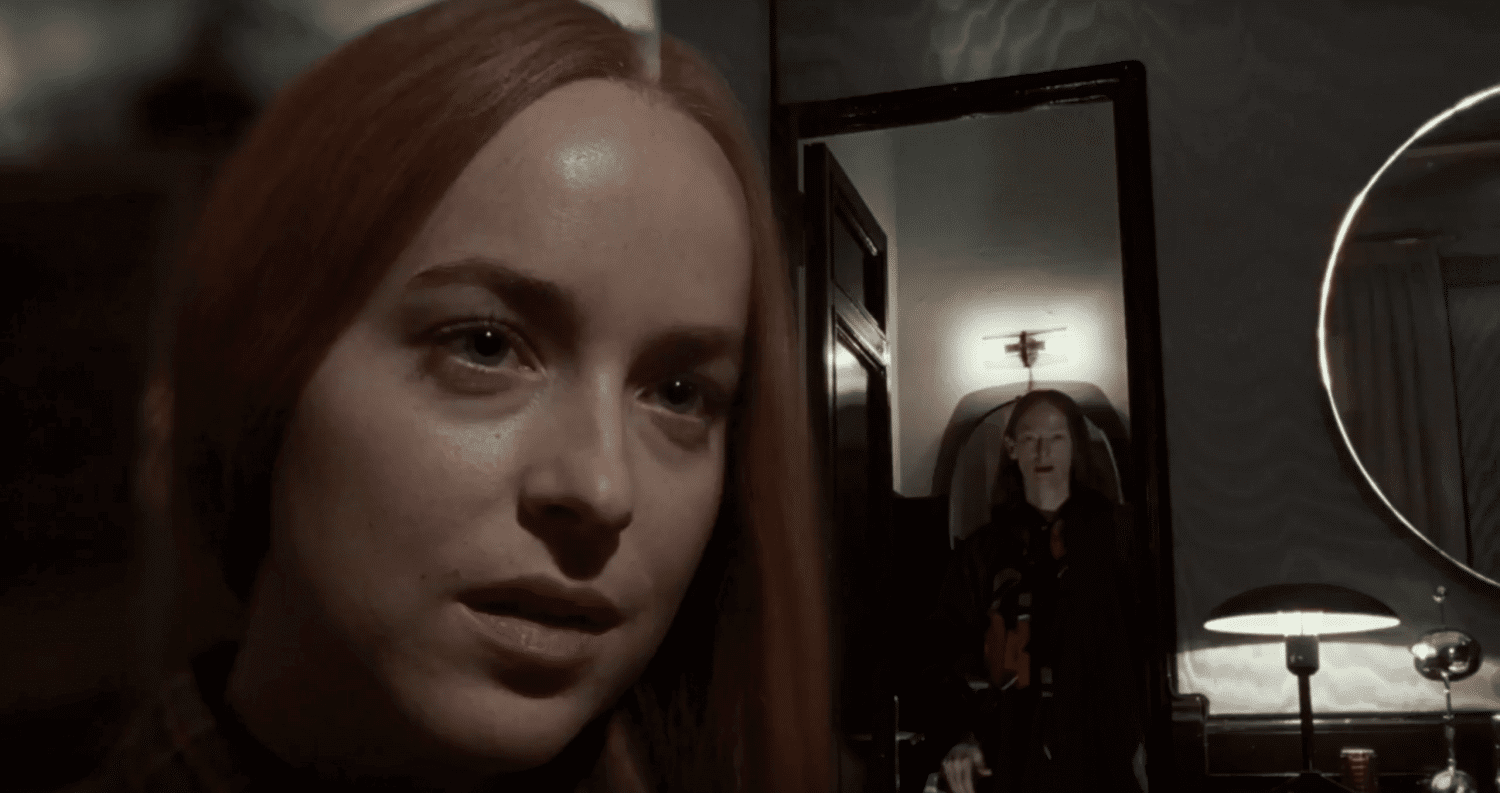
Split Diopter Lens in Suspiria
Similarly, the split focus diopter shot comes up in the 2018 remake Suspiria, showing Susie and Madame Blanc in the same shot. The use of the shot here calls into question what their relationship will truly be. While it initially seemed as though they would be opponents, the shot suggests they will become partners quite soon.
RELATED POSTS
Applications for a Split Diopter
Split Diopter Shots for Tone
Put your hand in front of your face. If you focus on your hand, you can’t see what’s in the background. If you focus on the background, then your hand becomes blurry. Due to this effect, when filmmakers implement a split diopter shot, it creates a sense of uneasiness. It’s not natural to see objects in this way, so it makes sense for the effect to used in moments of unnatural tension.
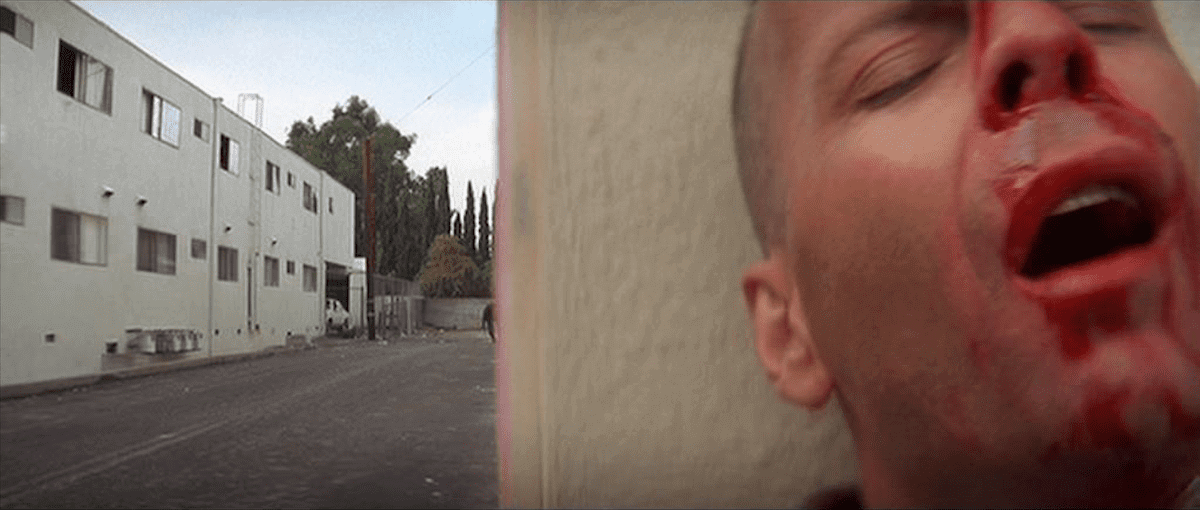
Split Diopter Lens in Pulp Fiction
In this moment, Butch is on the run from Marcellus (who you can see behind him in the alley). Like so many great split diopter shot examples, we get two stories at once — the hunter and the hunted.
Let’s look at how this same tension comes out in a very different kind of film: Toy Story 4. A clear split diopter effect is at play in this shot that brings Gabby and Forky into focus. It keeps them both in frame, but it also suggests something sinister is lurking beneath the surface.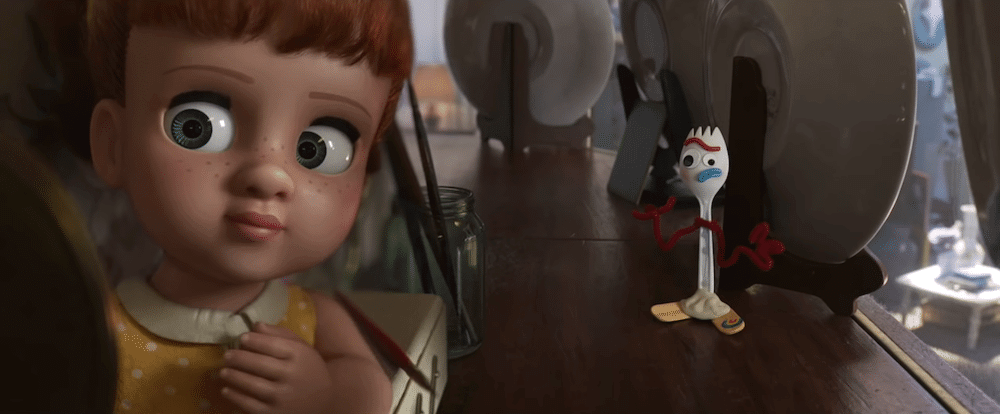
Split Diopter Lens in Toy Story 4
As we’ll soon learn, Gabby has ulterior motives for asking Forky all of these questions, and we’re meant to be thrown off-guard by the split diopter lens. If you’re wondering how such a shot is possible with an animated film, then watch this fascinating video from The Nerdwriter.
The Nerdwriter - The Real Fake Cameras of Toy Story 4
A split diopter lens is an incredibly useful tool. But just like any other tool, you need to know when to use it. With an artist’s vision and a commitment to framing a scene in a certain way, you can be confident your film will look exactly the way you envisioned.
Related Posts
Up Next
The power of the tilt-shift lens
Now that you're up to speed on the split diopter lens, it's time to jump into another very cool piece of glass. The tilt-shift lens also has an ability to bend and warp the image into images you won't believe.
Just like the split diopter lens, you'll want to know how the tilt-shift lens works and how you can use it to manipulate the image in various ways. And we're here to show you how it's done.
Up Next: Tilt-Shift Examples →
Showcase your vision with elegant shot lists and storyboards.
Create robust and customizable shot lists. Upload images to make storyboards and slideshows.
